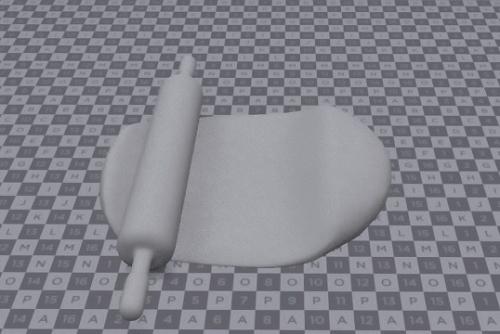| On this page |
Overview ¶
The plasticity feature in Vellum allows for an object to adopt a new rest shape once deformed either by a specified force, or an external collision object. As a general rule, you would usually want to avoid using Plasticity with regular Vellum cloth constraints, because there are very few real world examples where cloth has plastic properties. However, the softbody constraints in Vellum, such as the Tetrahedral Stretch Constraints, work very well with plasticity.

There are a few key plasticity parameters that let you control the behavior of your softbody object. Use a Vellum Tetrahedral Softbody in conjunction with a
Vellum Constraints node to achieve realistic results.
Understanding plasticity parameters ¶
There are three important plasticity parameters that will control the plasticity behavior of your softbody. These parameters are exposed on the Vellum Constraints node when the Enable Plasticity checkbox is turned on.
Plasticity Threshold
Once deformed past this value, the geometry will begin to take its new configuration. Below this threshold, the material will return to its original shape.
Plasticity Rate
This value determines the speed at which the geometry will adopt its new shape.
Plasticity Hardening
The geometry will harden post-deformation when given values greater than 1, and will become softer post-deformation when given values less than 1.
Example ¶
For an example of using plasticity with softbodies to create dough, see An introduction to Vellum softbodies on the SideFX website.